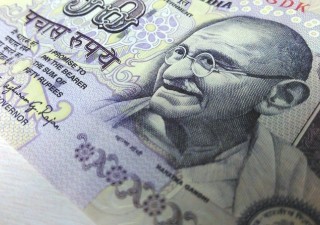Is India Worth the Investment?
25 January 2017

 If you think India is worth the investment, you will fight to register your patents,” says Pankaj Soni, a patents and patent litigation partner at Remfry & Sagar in Gurgaon. “When asked, on a scale of yes or no, would you invest in India, too many [potential investors] say maybe. This is the reaction we have to move away from to definitive answers.”
If you think India is worth the investment, you will fight to register your patents,” says Pankaj Soni, a patents and patent litigation partner at Remfry & Sagar in Gurgaon. “When asked, on a scale of yes or no, would you invest in India, too many [potential investors] say maybe. This is the reaction we have to move away from to definitive answers.”
Soni was speaking at the firm’s 2017 IP Seminar.
India presents risks, but it also presents opportunities, Soni says, mentioning innovation, IP infrastructure, human capital and its regulatory environment.
According to the Global Innovation Index, a joint publication of Cornell University, the INSEAD graduate business school and the World Intellectual Property Organization, India ranks 66th of 120 economies, with Brazil the only BRICS nation to have a lower ranking, at 69. However, in terms of the business environment, India ranks 117. “India is not a businessfriendly jurisdiction” Soni says.
Despite its poor business environment, India is inventing, Soni says. Comparing the periods 1994- 2004 and 2005-2015, Indian innovation saw domestic filings increase by 320 percent to more than 67,000 fillings. However, these still represent only about 21 percent of all filings in India, with more than 246,000 foreign fillings in the latter 10 year period.
With the increase in patent filings, India has found its way into the top tier of the patent filings tables, Soni says. “India is still in the top 10 in terms of patent filings, although [filings in India are] only around 1/20th of the number of filings of the global leader, China.”
According to the index, India ranks 87th in terms of existing infrastructure. Worryingly, in terms of both use of and access to information and communication technologies, India ranks at 107 and 108, respectively. Of course, from such a low figure, up is almost the only way to go.
In terms of human capital, Soni explained that it is not just about absolute numbers; how well people are educated and deployed is also important. Overall, India ranks 63rd, but if you look closer at the index, there are clear signs of opportunity. India ranks 31st in terms of research and development, and in terms of graduates in science and technology disciplines, India ranks eighth.
Soni posed the question as to whether there are provisions in India’s patent act which encourage innovation, suggesting that the act is focused on pharmaceuticals, perhaps even to the exclusion of other disciplines. “Everything is looked at through the pharma lens, and we need to move away from that,” he says.
Soni then went on to list some of the improvements India has made to its intellectual property regime and investment climate.
The Patent Office has digitized all IP records, introduced efilings, increased manpower, updated patent rules, increasing stakeholder meetings and made access to senior leaders better, and set up a cell for IPR promotion and management.
Government initiatives have been introduced to encourage investment. Make in India is a major initiative designed to facilitate investment and encourage innovation; Digital India is a campaign designed to improve India’s online infrastructure and increase internet connectivity; and India now has a national IPR policy. “You can bash or defend it, but any policy is a step up from no policy at all” Soni said.
In terms of competitiveness, India ranks 39th of 138 according to the World Economic Forum’s 2016 Global Competitiveness Report, an improvement of 16 places from the 2015 report. Amongst BRICS nations, this is second only to China, which ranks 28th.
Soni allowed that investing in India is a bit of a gamble at this time. Considering that a patent lifecycle is 240 months, potential investors need a long-term view before making their investment decision, and that is the same for India, he says. “The decisions you make today to file in India will be realized in seven years when the patent is granted, so you need to bet on where India will be then.”






